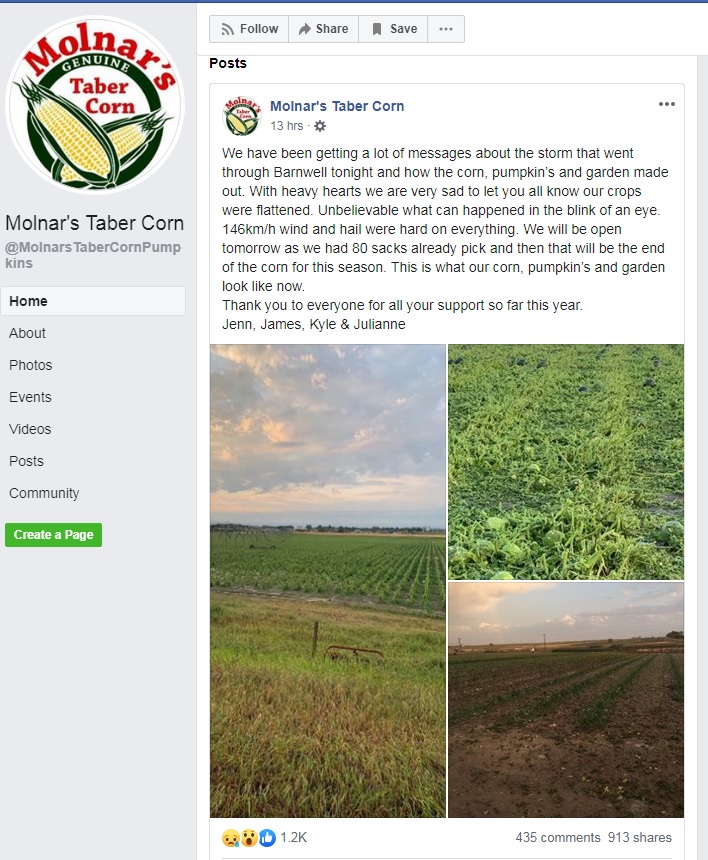Communities in southern Alberta are facing the aftermath of a severe thunderstorm earlier this week that left devastation in its wake — including damaging the famous Taber corn grown in the region.

On Tuesday afternoon, Environment Canada issued a severe thunderstorm warning as strong winds moved southeast across the province, travelling more than 100 kilometres from Calgary all the way to Formost, Alta.
Environment Canada said winds as strong as 146 kilometres per hour were tracked during the storm with golf ball-sized hail up to 45 millimetres in circumference plummeting to the ground in Taber, Alta.
The fast-moving system wiped out several fields of corn, which some producers say had stood about two metres tall before the disaster struck.
One agronomist surveying land in the area Wednesday said the combination of weather and hail caused significant damage to several farmers’ equipment and crops in the area.

Get breaking National news
“It’s tough to tell exactly how many acres because farmers are now just assessing it,” said Catherine Kirkhoff, an agronomist with Taber Home and Farm Centre.
“Farmers are just now trying to figure out what has all been affected and how badly it’s been affected.”
“Anywhere that it did hit, it was pretty much defoliation.”
One family operation hit especially hard by the storm was Molnar’s Taber Corn. The family-run business took to Facebook on Tuesday to share its losses with the public.
“With heavy hearts, we are very sad to let you all know our crops were flattened,” the Facebook post read.
“Unbelievable what can happen in the blink of an eye.”
Fortis Alberta added the storm also downed several power lines in the area, leaving more than 200 people without power for several hours.
“We had some damage to our facilities near Coaldale and south of Taber,” Alana Antonelli, communications manager for Fortis Alberta, said.
“We had approximately 36 poles that have been damaged or have come down.”
Just after 9:30 p.m. all severe thunderstorm warnings were lifted in southern Alberta, but Kirkoff said the effects of this flash-storm will last much longer for many.
“Because of the time of the year, this is really bad for those growers. They can’t just wait for their crops to try and re-grow,” she said.
“It’s late enough and close enough that now they’re crops can’t re-grow.”

_848x480_1583394371985.jpg?w=1040&quality=70&strip=all)

Comments